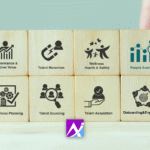The boundaries around the typical workday schedule have dissolved. The division between work and home was blurred when using smartphones for email after hours became the norm. However, after the pandemic pushed all work remote and some workplaces have decided to be permanently remote, any separation of work and home has disappeared entirely.
Harvard Business Review published the results of a study analyzing the concept of “team overlap” — which is the extent to which the work hours of team members overlap with one another. In a traditional physical in-office environment, there is usually a high degree of overlap due to the core hours that most businesses operate. There are more varied work hours in a remote workplace, and there may be less overlap in the hours worked within a team. The study of 187 employees across six Fortune 500 companies confirmed that the digital workday never really ends, with many employees working long hours or being always online. Additionally, it showed that the remote workday has two different parts: an 8-hour window from 9-5 where team members generally work together and have a high degree of team overlap, and then a 16-hour window where team members work apart. During the first 9-5 window, team members overlap with 50–70% of their colleagues, and in the second window, team members are overlapping with 10-50% of their coworkers.
The results of this study highlight an intriguing problem for leaders. How can managers promote cohesion and connection within their team but without micromanaging at-home performance? Managers can start by setting the basic guidelines around the workday if there are any key hours that people are expected to be available. Creating guidelines doesn’t mean that managers should establish a rigid schedule or 8 hour day, but rather think about when and where the team needs to overlap for business continuity. Allowing for flexibility benefits both the company and the employee. Allowing employees to set their schedule also helps them take advantage of the time where they’re naturally most productive. If specific people with productivity problems or issues needing schedule overlap, those problems should be directly addressed.
In addition to specifying which hours employees are expected to be connected, help your employee’s mental health by modeling healthy work boundaries. By sending emails at 2 a.m. as a leader, you may unknowingly create the thought that the expectation is to be available around the clock. If you’re up at all hours, schedule your emails to go out within business hours or save the email in drafts and send them when you log in for the morning. If you notice employees responding on time off, evenings and weekends, let them know that they aren’t expected to be constantly available. Have a conversation about healthy boundaries around work time and let them know that it won’t impact your impression of their dedication or performance. By helping your employees set these boundaries, you decrease the chances of negative mental and physical health consequences.
How to Manage Flexible Work Schedules





